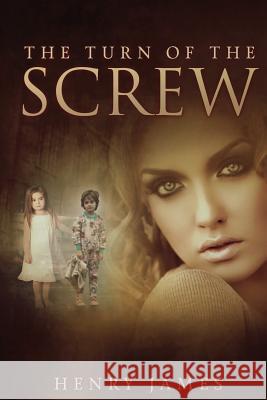The Turn of the Screw » książka
topmenu
The Turn of the Screw
ISBN-13: 9781495283482 / Angielski / Miękka / 2014 / 128 str.
The Turn of the Screw
ISBN-13: 9781495283482 / Angielski / Miękka / 2014 / 128 str.
cena 26,01
(netto: 24,77 VAT: 5%)
Najniższa cena z 30 dni: 25,87
(netto: 24,77 VAT: 5%)
Najniższa cena z 30 dni: 25,87
Termin realizacji zamówienia:
ok. 16-18 dni roboczych.
ok. 16-18 dni roboczych.
Darmowa dostawa!
The Turn of the Screw, originally published in 1898, is a ghost story novella written by Henry James.
Due to its ambiguous content, it became a favourite text of academics who subscribe to New Criticism. The novella has had differing interpretations, often mutually exclusive. Many critics have tried to determine the exact nature of the evil hinted at by the story. However, others have argued that the true brilliance of the novella comes with its ability to create an intimate confusion and suspense for the reader. Major themes Throughout his career James was attracted to the ghost story genre. However, he was not fond of literature's stereotypical ghosts, the old-fashioned 'screamers' and 'slashers'. Rather, he preferred to create ghosts that were eerie extensions of everyday reality-"the strange and sinister embroidered on the very type of the normal and easy," as he put it in the New York Edition preface to his final ghost story, "The Jolly Corner." The Turn of the Screw is no exception to this formula. In fact, some have wondered if he didn't intend the "strange and sinister" to be embroidered only on the governess's mind and not on objective reality. The result has been a long-standing critical dispute about the reality of the ghosts and the sanity of the governess. Beyond the dispute, critics have closely examined James's narrative technique for the story. The framing introduction and subsequent first-person narrative by the governess have been studied by theorists of fiction interested in the power of fictional narratives to convince or even manipulate readers. The imagery of The Turn of the Screw is reminiscent of the gothic genre. The emphasis on old and mysterious buildings throughout the novella reinforces this motif. James also relates the amount of light present in various scenes to the strength of the supernatural or ghostly forces apparently at work. The governess refers directly to The Mysteries of Udolpho and indirectly to Jane Eyre, evoking a comparison of the governess not only to Jane Eyre's protagonist, but to Bertha, the madwoman confined in Thornfield.
Zawartość książki może nie spełniać oczekiwań – reklamacje nie obejmują treści, która mogła nie być redakcyjnie ani merytorycznie opracowana.











